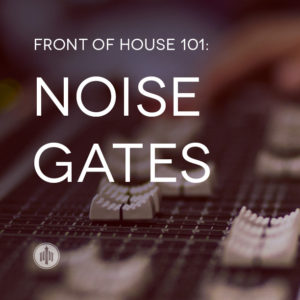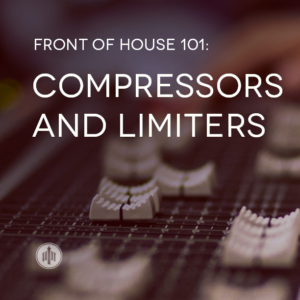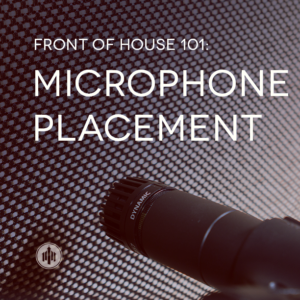Andy brings us the third installment of Personal Mixing 101.
Loudness: Perception vs. Reality
If you’re reading this, you’ve most likely had someone walk up to you and say “Can you turn it down? It’s too loud.” If it’s one person (there’s one in every crowd…), we’ve come to expect that from them, and we usually apologize for their discomfort and say something along the lines of “Thanks for …
Personal Mixing // Starting With a Good Foundation
If you are unfamiliar with personal monitoring systems, it’s time to get up to speed. Personal monitor systems allow each performer to have a mix with as much “me” as they want without conflicting with their neighbor. They can allow you to take most if not all the monitors (floor wedges) off the stage, reducing clutter and, more …
F.O.H. 101 // Understanding Your Role in a Production
Be sure to read the other posts in the FOH series! Running any sort of production, no matter the scale, is never a one-person job. The multitude if elements of any production need to flow together as seamlessly and effortlessly as possible. Understanding individual roles in the process can go a long way to achieving …
F.O.H. 101 // Understanding Your Role in a ProductionRead More
F.O.H. 101 // Equalization
In its most simple terms, equalization (or EQ, for short) refers to the boosting of desired frequencies and cutting of undesirable frequencies on a given audio signal. In broader usage, it can be used to correct specific problems on that signal, to overcome deficiencies in the frequency response of a microphone (or the timbre of …
F.O.H. 101 // Gain Staging
The most important thing that we as audio engineers do is get signal from instrument to speakers. But to do that, the signal (at its most basic level) must first pass from the instrument into a microphone or DI box, down a line, through a snake, into a console, into a preamp, through an equalizer, …
F.O.H. 101 // Noise Gates
Be sure to check out the previous posts in FOH 101: Microphone Selection, Microphone Placement, and Compressors and Limiters. NOISE GATES Noise gates are a Front-of-House engineer’s best friend. Their ability to clean up an audio signal, reduce noise, and make the mix sound crisp and clear is unrivaled. Adding a gate to an audio …
F.O.H. 101 // Compressors & Limiters
COMPRESSORS AND LIMITERS Military communications during the Second World War were, at best, strained. Equipment of the time could not properly transmit the quieter sounds of the human voice over the sounds of battle because they were drowned out by the louder gunfire noises and explosions. New technology had to be developed so that radio …
F.O.H. 101 // Microphone Placement
BASIC MICROPHONE PLACEMENT Now that we’re able to make informed decisions in regards to selecting the best microphone for the job, we’re ready to place them on the instrument to get the best possible sound. As with microphone selection, placement of the microphone largely comes down to personal preference and how they sound in your …
F.O.H. 101 // Microphone Selection
HOW MICROPHONES WORK A microphone is a form of transducer, or a device that changes one form of energy into another corresponding form of energy. The same way that the magnets in guitar pickups turn the vibration of the strings into electrical energy, the microphone turns changes in air pressure into an electrical signal. That …








